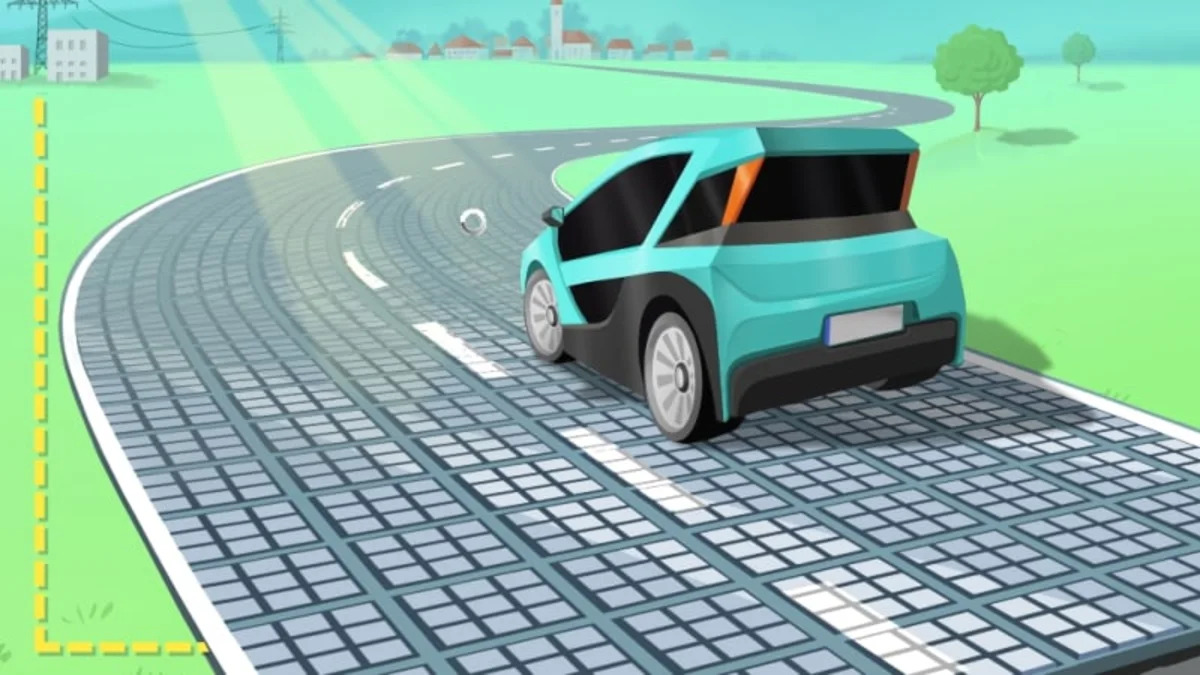Solar roads are an idea that has been toyed with for a while now, with varying degrees of follow through. It makes sense. Vehicular mobility is here to stay, and we'll continue to pave the world until something with more mass appeal than car ownership comes along. Those flat, open, paved expanses – almost always open to the sky above, and often stretching for hundreds of miles across landscapes – usually soak up a lot of sunlight. Those photons, for the most part, are wasted. If only we could find a solution to the limitations of cost and durability, those millions of miles of pavement could do double duty as a source of renewable energy.
A German startup called Solmove is the latest in making that space work for us by installing photovoltaic cells in pathways. Yeah, we've seen other upstarts take on the idea, like the fanciful Solar Roadways. We've seen smaller-scale but more practical implementations of the same idea bear fruit in Holland and in Canada, among other places. So far, the idea seems to be more viable on lightly traveled pathways, as regular roads and highways take too severe a beating from cars, trucks, and other heavy machinery. Like the solar bike- and footpaths we've seen of late, Solmove has developed its flexible glass pathway for non-automotive use, at least for now.
Solmove will be deploying a demonstration of its energy-harnessing groundwork at a site near Berlin's Haus der Zukunft. The glass surface deflects light onto the solar cells, harnessing energy at an efficiency of about 10 to 15 percent. For reference, SolarCity's most advanced rooftop solar panel system, which it claims is the world's most efficient, has an efficiency of 22 percent.
As the cost of solar systems drop while yields increase, harnessing the sun's energy continues to become more and more sustainable. In powerhouses like Germany which foresee an increase in demand of both energy (particularly of the renewable kind) and space, finding novel ways to take advantage of said space and energy sources with rapidly advancing technology is a smart move.
Related Video:
A German startup called Solmove is the latest in making that space work for us by installing photovoltaic cells in pathways. Yeah, we've seen other upstarts take on the idea, like the fanciful Solar Roadways. We've seen smaller-scale but more practical implementations of the same idea bear fruit in Holland and in Canada, among other places. So far, the idea seems to be more viable on lightly traveled pathways, as regular roads and highways take too severe a beating from cars, trucks, and other heavy machinery. Like the solar bike- and footpaths we've seen of late, Solmove has developed its flexible glass pathway for non-automotive use, at least for now.
Being based in Germany, Solmove sees unique obstacles and opportunities. Compared to the US, there's a bit more near-term potential for Solmove's product in Germany. The space premium means more of an incentive to make the most of unused surface area, as does the country's shift toward renewables and a expected increase in energy demand. "Everything is small in Germany compared to the US," says Solmove founder Donald Müller-Judex. "There are a lot of people. Maybe we can use the landscape. But this is a smart way to use places we use already."Solmove has developed its flexible glass pathway for non-automotive use.
Solmove will be deploying a demonstration of its energy-harnessing groundwork at a site near Berlin's Haus der Zukunft. The glass surface deflects light onto the solar cells, harnessing energy at an efficiency of about 10 to 15 percent. For reference, SolarCity's most advanced rooftop solar panel system, which it claims is the world's most efficient, has an efficiency of 22 percent.
As the cost of solar systems drop while yields increase, harnessing the sun's energy continues to become more and more sustainable. In powerhouses like Germany which foresee an increase in demand of both energy (particularly of the renewable kind) and space, finding novel ways to take advantage of said space and energy sources with rapidly advancing technology is a smart move.
Related Video:


Sign in to post
Please sign in to leave a comment.
Continue